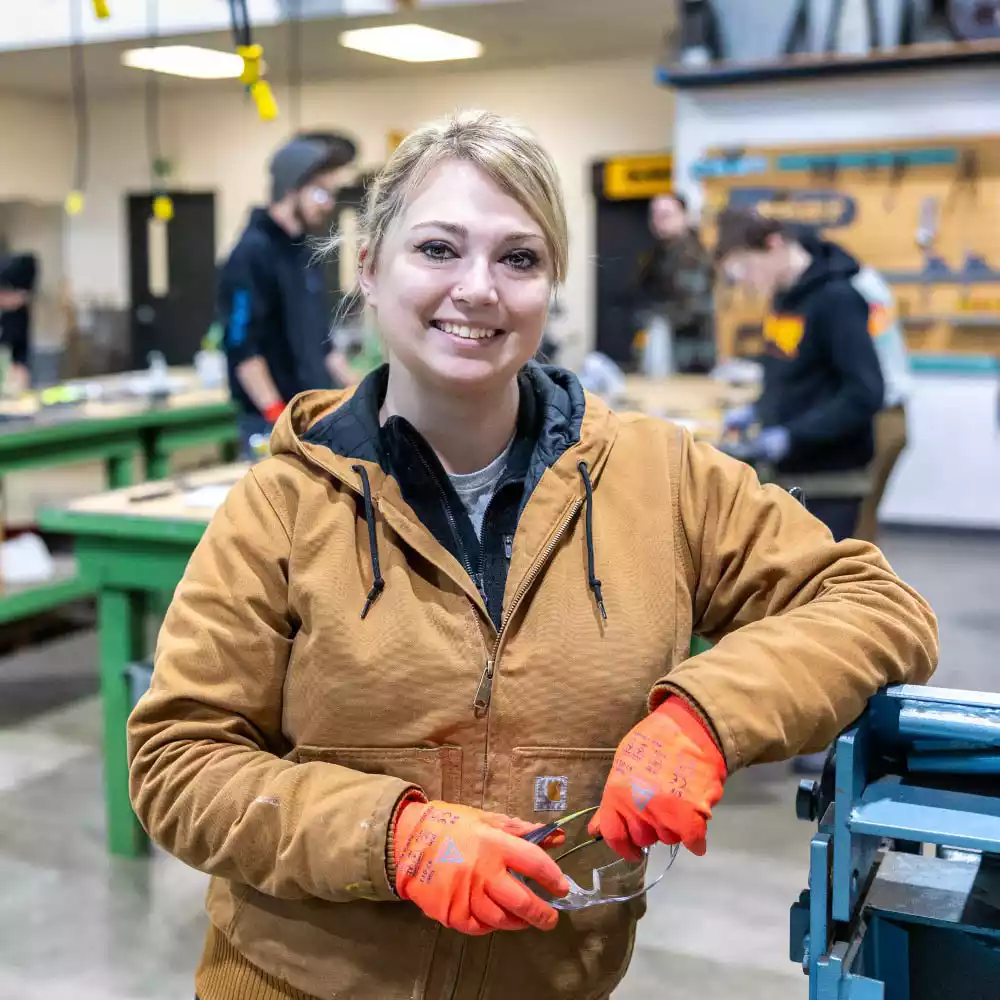Apprenticeship is a form of training for a skilled trade or craft that combines classroom instruction with on-the-job experience. It involves working under the guidance and supervision of a master tradesperson or experienced professional to learn the practical skills and knowledge necessary for a particular occupation. Apprenticeships can last from one to five years, depending on the field and the program, and often lead to certification or journey-level status in the chosen trade.
A sheet metal apprenticeship provides a structured path to becoming a skilled tradesperson with a diverse skill set applicable in various industries including construction, manufacturing, and HVAC. Of all the industrial trades, sheet metal is the only trade that designs and fabricates what is installed from raw materials. Upon completion of the apprenticeship, individuals achieve journey-level status, ready to pursue a career as a professional sheet metal worker.
Sheet metal finds applications in diverse industries such as construction, HVAC, industrial settings, architectural metalwork, and more. As a sheet metal worker, you’ll engage in a wide array of projects, acquiring skills like computer-aided drafting, fabrication, installation, and enjoying ample opportunities for professional growth.
The sheet metal industry offers multiple job prospects in numerous categories including Commercial and Residential HVAC, Service and Refrigeration, Testing, Adjusting and Balancing, Industrial and Detailing.
Given the specialized skills required, sheet metal workers often command higher pay compared to other trades, paving the way for a financially secure future.
Our apprenticeships focus on providing practical, hands-on experience complemented by classroom instruction. Learning from seasoned industry professionals, you’ll have the chance to apply your skills in real-world scenarios.
Our industry offers opportunities for career progression. With experience and additional training, you can advance to supervisory roles, project management, or even start your own sheet metal business. Continuous learning and skill development open doors to higher-paying positions and increased responsibilities.
The job outlook for sheet metal and HVAC workers indicates a projected 4% industry job growth by 2029. The Sheet Metal and Air Conditioning Contractors’ National Association (SMACNA) reports that 34% of the workforce is set to retire by 2025, creating a demand for the replacement of 14,000 jobs.
The Sheet Metal Institute currently offers two State-Registered apprenticeship training programs: Sheet Metal Worker and Service Systems Technician. You will learn to weld, measure, cut, bend, and shape sheet metal to use in construction projects such as HVAC system, ductwork, roofing and building facades. By the end of the apprenticeship, you’ll be proficient in fabricating, installing, and repairing sheet metal products, equipped with both practical experience and technical knowledge.
Apprentices work full-time and attend class part-time. You’ll attend class for 40 hours a week, five weeks throughout a year, for five years. Collectively, the program includes 1,000 hours of classroom/lab instruction and 8,000 hours of on-the-job training. Classes typically consist of 12 students who remain in the same cohort for five years. As a result, you’ll end up building strong bonds and friendships that often last a lifetime.
Upon completion, you’ll receive:
Acquire insight into the four categories of HVAC systems and differentiate between package units, split systems, built-up systems, and package terminal air conditioners. Understand the function of HVAC control systems and identify three types of control systems along with their main components.
Demonstrate the significance of hands-on skills and techniques in measuring, sketching, detailing for fabrication, and job layout. Develop abilities in print and specification reading, as well as the installation of ornamental materials and systems used in architectural sheet metal work and the industry.
Undergo in-depth guidance and practical exposure in every facet of the profession, covering a range of areas such as testing, adjusting, and balancing of air handling equipment, duct work, water distribution systems, basics of HVAC systems, duct design and computer programs.
Utilize computer-aided drafting to master the art of detailing, generating detailed HVAC construction drawings for installation purposes.
Applies expertise in laying out, manufacturing, fabricating, assembling, and repairing metal components and jobbing.
